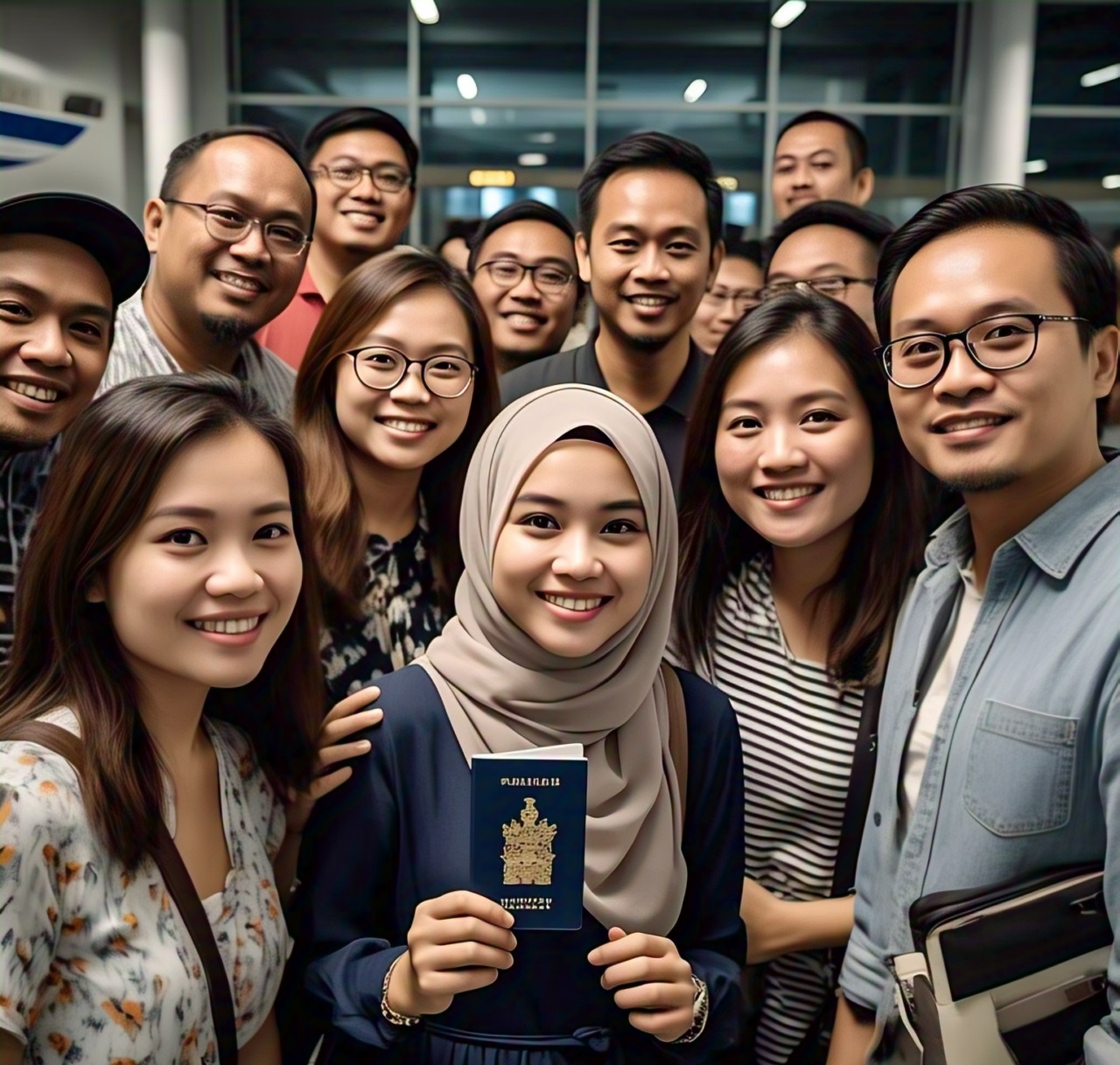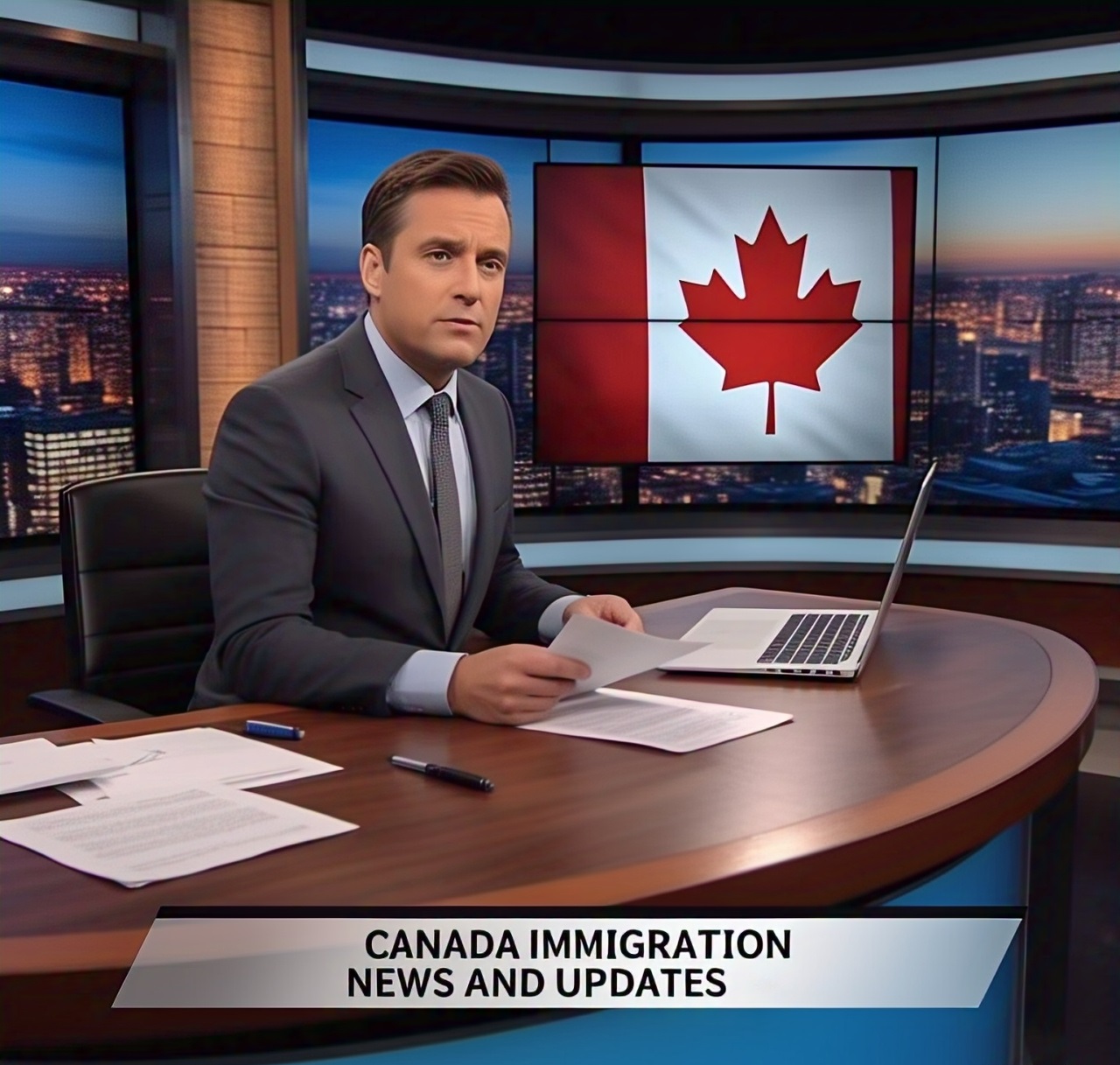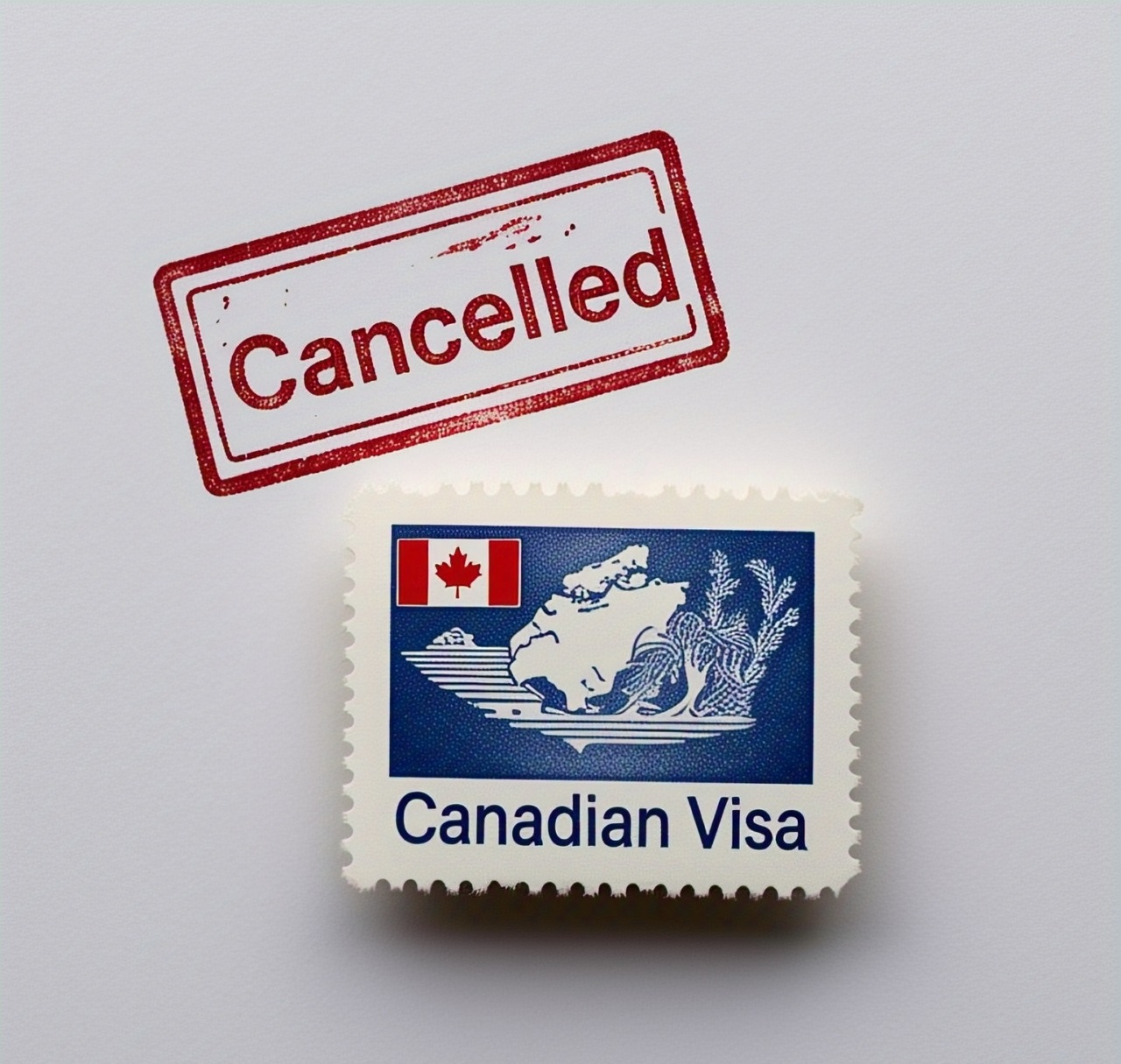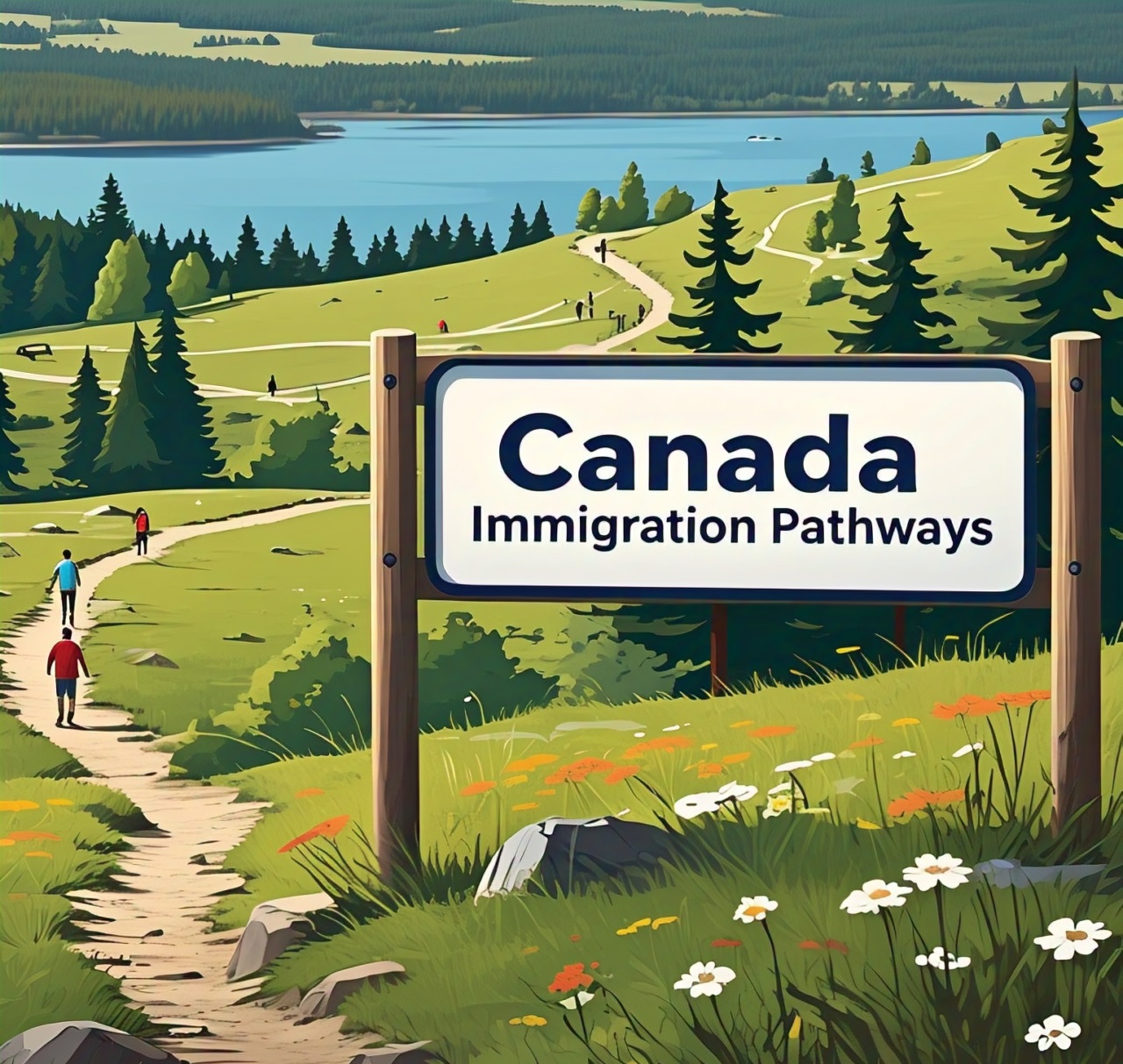The Immigration, Refugees and Citizenship Canada (IRCC) has revealed the new categories for Express Entry, a significant development that has been eagerly anticipated. The announcement brings clarity to the confusion surrounding the categories, which were previously uncertain. The new categories are part of the Federal Economic Priorities, which aim to address labor market shortages in specific sectors. The six categories are: 1-French Language Proficiency: Candidates with strong French language skills, scoring level 7 in all four factors, are eligible for this category. 2-Healthcare and Social Services Occupations: This category includes healthcare professionals, such as nurses, doctors, and pharmacists, as well as social services occupations like counselors and social workers. 3-STEM (Science, Technology, Engineering, and Math) Occupations: Although the STEM category has been significantly reduced, it still includes some IT and tech-related occupations, such as cybersecurity specialists. 4-Trade Occupations: This category has been expanded to include more occupations, such as roofers, concrete finishers, and cooks. 5-Agriculture and Agri-Food Occupations: This category includes occupations like butchers and farm workers. 6-Education Occupations: This new category includes teachers, instructors, and education assistants. The IRCC has allocated 41,700 spots for these categories, with a focus on French-speaking candidates outside of Quebec. The number of invitations to apply (ITAs) will be lower than the allocated spots, as each ITA can include multiple family members. The new categories have raised some questions, particularly regarding the inclusion of cooks under trade occupations and insurance agents under STEM occupations. While these inclusions may seem unexpected, they reflect the labor market priorities identified by the IRCC. It is essential to note that the Express Entry draws will not be as frequent as expected, and the scores required for selection may be higher due to the increased competition. Ontario’s immigration program, which has historically aligned with Express Entry, may also undergo changes in response to the new categories. In conclusion, the new categories for Express Entry offer opportunities for candidates with specific skills and experience. However, it is crucial to understand the labor market priorities and the potential challenges that come with these changes. As the IRCC continues to refine its immigration programs, it is essential to stay informed and adapt to the evolving landscape. Let Worldbridge Immigration Services be your guide to a successful future in Canada Contact us: Website: www.theworldbridge.ca Email: info@theworldbridge.ca Phone/WhatsApp: +1-416-727-7766 Social Media: @worldbridgeHQ
Canada Introduces First-Ever Cap on Temporary Residents
In a landmark policy shift, Canada has announced new restrictions on temporary residents, marking the first time the country has set limits on the number of foreign workers, international students, and asylum seekers it admits. Immigration Minister Marc Miller confirmed that Canada aims to gradually reduce the percentage of temporary residents to 5% of the total population, down from the current 6.2%, in an effort to ensure sustainable immigration growth and address economic challenges such as housing affordability. Key Changes and Implementation Timeline 1-Temporary Foreign Workers: Starting May 1, 2025, Canadian businesses will face stricter requirements when hiring temporary foreign workers. They will need to prove more quickly that no Canadian citizen or permanent resident can fill the position before hiring a foreign worker. 2-Sector Exemptions: Healthcare and construction—two industries facing severe labor shortages—will be exempt from these restrictions until at least August 31, 2025. 3-Cap on International Students & Asylum Seekers: The government will begin limiting the number of study permits and asylum claims starting September 2025 as part of a three-year plan. 4-Overall Reduction in Temporary Residents: Canada currently hosts 2.5 million temporary residents, a sharp increase from 1 million in 2021. The goal is to bring this number down systematically over the next few years. Reasons Behind the Policy Change The move comes amid rising concerns over housing affordability, labor market conditions, and strained social services. The rapid influx of temporary residents, including over 800,000 international students in 2022, has been linked to increased competition for housing and jobs. Additionally, Canada recently reinstated visa requirements for Mexican nationals following a surge in asylum claims, highlighting the government’s growing efforts to control migration flows more effectively. Minister Miller emphasized that while Canada remains committed to its international humanitarian obligations, the government must ensure that immigration growth aligns with the country’s economic capacity and infrastructure. Reactions to the New Restrictions Final Thoughts This policy marks a significant shift in Canada’s approach to immigration, moving away from an open-door policy to a more regulated and controlled system. Prospective temporary residents—including workers, students, and visitors—should stay informed about upcoming changes to ensure they meet the new requirements. For those planning to work, study, or visit Canada, consulting with an immigration professional like us is highly recommended to navigate these evolving regulations. Let Worldbridge Immigration Services be your guide to a successful future in Canada Contact us: Website: www.theworldbridge.ca Email: info@theworldbridge.ca Phone/WhatsApp: +1-416-727-7766 Social Media: @worldbridgeHQ
Canada Introduces New Rules Allowing Visa Cancellation by Border Officers
In a significant update to Canadian immigration regulations, Immigration, Refugees and Citizenship Canada (IRCC) has expanded the authority of border officers, including those from the Canada Border Services Agency (CBSA), to cancel temporary resident visas and other related documents under specific circumstances. This new rule applies both at the border and within or outside Canada, affecting individuals holding temporary resident visas (TRVs), work permits, and other travel documents. If you are planning to travel to Canada or currently hold a valid visa, understanding these new regulations is essential to avoid unexpected issues at the border. Key Changes Under the Updated Regulations The recent changes to the Immigration and Refugee Protection Regulations (IRPR) grant IRCC and CBSA officers the power to cancel temporary resident documents under specific conditions. These include: 1. At the Border or Inside Canada: Officers now have the authority to revoke a visa upon arrival or while an individual is in Canada if they determine the person no longer meets entry requirements. 2. Outside Canada: A visa can also be canceled before an individual boards a flight to Canada if authorities find grounds for inadmissibility. 3. Administrative Errors: If a visa was issued by mistake or due to an oversight, it can now be canceled. 4. Failure to Prove Temporary Stay Intent: If a border officer believes an individual may not leave Canada before their authorized stay expires, they have the discretion to cancel the visa. 5. Change in Status: If a person has obtained permanent residency (PR), their temporary resident visa or permit may be revoked, as they no longer require it. 6. Inadmissibility Issues: If a person is deemed inadmissible due to reasons such as criminality, security concerns, misrepresentation, or medical ineligibility, their visa can be canceled. 7. Deceased Status: If authorities are informed that the visa holder is deceased, the visa will be voided accordingly. How This Change Impacts Travelers to Canada Previously, once a temporary resident visa was issued, IRCC had limited authority to revoke it, except in extreme cases such as fraud or security concerns. However, with this new regulation, visa holders are now subject to stricter scrutiny at all stages of travel. For example: This aligns Canada’s approach more closely with U.S. immigration policies, where visa cancellations by border officers are more common. What Travelers Should Do to Avoid Issues To minimize the risk of having your visa canceled: Final Thoughts This new policy emphasizes the importance of compliance with Canadian immigration regulations. Travelers must exercise caution, ensure their status is clear, and be prepared for additional scrutiny at entry points. For professional assistance in understanding your visa status or handling any immigration concerns, consulting with an authorized immigration professional like us at Worldbridge immigration is highly recommended. Let Worldbridge Immigration Services be your guide to a successful future in Canada Contact us: Website: www.theworldbridge.ca Email: info@theworldbridge.ca Phone/WhatsApp: +1-416-727-7766 Social Media: @worldbridgeHQ
New PR Pathways Launched: RCIP and FCIP
In recent times, Canadian immigration updates have been largely filled with restrictions, program cuts, and increasing limitations. However, amidst these changes, two new immigration pathways—RCIP (Rural Community Immigration Program) and FCIP (Francophone Community Immigration Program)—have been officially announced, offering new opportunities for permanent residency in Canada. These programs were initially introduced in March 2024 as potential successors to the Rural and Northern Immigration Pilot (RNIP), which officially ended on August 31, 2024. After months of anticipation, details of these programs have now been published in the Canada Gazette, confirming their structure and eligibility criteria. RCIP & FCIP: What We Know So Far Although the official list of all participating communities has not yet been released, 14 communities under RCIP have been identified, with an additional four yet to be confirmed. Interestingly, Pictou County in Nova Scotia is included, despite Nova Scotia already being part of the Atlantic Immigration Program (AIP). Similarly, communities in Manitoba, Ontario, and British Columbia have been added to the program. On the FCIP side, six francophone communities will be part of the pilot, including locations in New Brunswick, Ontario, Manitoba, and British Columbia. Eligibility & Application Process Both RCIP and FCIP are expected to follow a two-step application process, similar to the RNIP: 1. Community Endorsement: Candidates must secure a job offer from an employer in one of the participating communities and obtain an official endorsement. 2. Permanent Residence Application: Once endorsed, candidates can submit their permanent residence (PR) application to IRCC. The previous RNIP had a fast-processing time of 8–12 months, and it is expected that RCIP and FCIP will follow a similar timeline. Federal Eligibility Requirements While each participating community will have its own additional criteria, the federal requirements are expected to be: 1-Work Experience: At least one year (1,560 hours) of work experience in the past three years (unless exempted through community-based education). 2-Education: Minimum of a Canadian high school diploma (or an equivalent foreign credential assessed by an ECA). 3-Language Proficiency: 4-Job Offer: Must be genuine, full-time, and permanent, from an employer within the selected community. 5-Proof of Funds: Required unless the applicant is already working in Canada. 6-Community Connection: Candidates must demonstrate a commitment to settling in the community, which can be strengthened by previous work, education, or family ties in the area. For FCIP applicants, French language skills will be a key requirement. Those with TEF or TCF scores equivalent to CLB 5 or higher will have a competitive advantage. A New Opportunity for Foreign Workers RCIP and FCIP provide valuable alternatives for individuals who may struggle to qualify under Express Entry due to the high CRS score cut-offs. These programs open doors for foreign workers, allowing them to apply for PR through community-driven pathways. However, with limited spots available, competition is expected to be fierce. Those interested should actively seek employment opportunities in eligible communities and stay updated on official announcements from IRCC and community websites. This is an excellent opportunity for those looking to immigrate to Canada, especially in a time when traditional immigration pathways are becoming increasingly restrictive. If you’re eligible, act quickly to take advantage of these new programs before quotas are filled. Stay tuned for more updates as additional details become available! Let Worldbridge Immigration Services be your guide to a successful future in Canada Contact us: Website: www.theworldbridge.ca Email: info@theworldbridge.ca Phone/WhatsApp: +1-416-727-7766 Social Media: @worldbridgeHQ
Top 5 Essential Documents for Canada Express Entry (2025)
Applying for Canadian permanent residency (PR) through the Express Entry system requires careful preparation, especially when it comes to documentation. Whether you’re applying through the Federal Skilled Worker Program (FSWP), Canadian Experience Class (CEC), or a Provincial Nominee Program (PNP), certain documents are critical for a successful application. Below, we outline the top five essential documents you need and why they matter. 1. Employment Reference Letter A properly structured employment reference letter is crucial for verifying your work experience. It should: Failure to provide a proper reference letter may result in rejection or requests for additional documentation. If you cannot obtain this document, alternative proofs such as pay stubs, tax documents, or a statutory declaration may be required. 2. Educational Credential Assessment (ECA) An ECA report is mandatory if you completed your education outside Canada. It assesses whether your foreign degree, diploma, or certificate is equivalent to Canadian educational standards. Recognized organizations for ECA include: Only the highest level of education needs assessment (e.g., if you have a master’s degree, evaluating your bachelor’s degree is unnecessary). 3. Language Proficiency Test Language proficiency in English or French is a core requirement for Express Entry. Accepted tests include: You must meet the minimum Canadian Language Benchmark (CLB) score required for your program. Since test results are valid for two years, ensure your score is valid at the time of application. Expired test scores may lead to disqualification. 4. Proof of Employment and Salary (Pay Stubs/Bank Statements) For Express Entry, you must demonstrate that your work experience was paid and legitimate. Accepted documents include: Providing complete and verifiable proof of your work experience strengthens your application and reduces the risk of rejection. 5. Police Clearance Certificate (PCC) A Police Clearance Certificate (PCC) is required to confirm that you have no criminal record. You must provide PCCs from: PCCs should be recent (typically issued within six months before submission). If you are unable to obtain one in time, you may submit a letter explaining the delay along with proof of application. Additional Documents (If Applicable) Depending on your situation, you may also need: Final Thoughts Submitting a well-prepared application with accurate and complete documentation increases your chances of successfully obtaining PR in Canada. Double-check all documents before submission and ensure they meet Immigration, Refugees and Citizenship Canada (IRCC) requirements. For professional guidance on your application, consider consulting an immigration expert or authorized consultant. Let Worldbridge Immigration Services be your guide to a successful future in Canada Contact us: Website: www.theworldbridge.ca Email: info@theworldbridge.ca Phone/WhatsApp: +1-416-727-7766 Social Media: @worldbridgeHQ
Canada’s New Open Work Permit Rules & PNP Challenges in 2025
Canada’s immigration policies are undergoing significant changes in 2025, impacting international students, foreign workers, and aspiring permanent residents. Two key developments include new restrictions on Open Work Permits (OWP) and challenges affecting the Provincial Nominee Program (PNP). These changes aim to manage infrastructure strain, ensure economic sustainability, and streamline immigration pathways. If you are considering moving to Canada, here’s what you need to know about these major updates. New Open Work Permit Restrictions (Effective January 21, 2025) For years, Canada has maintained flexible work permit policies for family members of international students and foreign workers. However, recent restrictions indicate a shift toward prioritizing highly skilled professionals in critical fields. 1. Stricter OWP Rules for Family Members of International Students One of the most significant changes affects the spouses and common-law partners of international students. Under the new rules, Open Work Permits will only be issued if the student is enrolled in: A Master’s program (minimum 16 months) A Doctoral (PhD) program A professional program in medicine, law, engineering, pharmacy, or similar regulated fields Spouses of students pursuing diplomas, undergraduate degrees, or non-eligible programs will no longer qualify for OWPs. This adjustment aims to prioritize skilled professionals and better align immigration policies with Canada’s economic needs. 2. New Restrictions for Spouses of Foreign Workers Similar limitations apply to foreign workers’ spouses. Open Work Permits will only be issued if: The primary applicant is employed in high-skilled occupations under National Occupational Classification (NOC) TEER 0 or 1 (senior management and specialized roles). Some TEER 2 and 3 occupations may still qualify, particularly in healthcare, construction, and natural sciences. The foreign worker must have at least 16 months remaining on their work permit when applying for their spouse’s OWP. This policy change ensures stability for families while reinforcing Canada’s focus on skilled labor and economic sustainability. 3. Exceptions and Alternative Pathways Despite these restrictions, there are some exceptions: Applicants covered under free trade agreements (such as CUSMA for U.S. and Mexican workers) remain eligible. Those in the process of obtaining permanent residency can still apply for OWPs. Employer-specific work permits or studying in eligible programs may provide alternative options for those affected. The Canadian government estimates that these new restrictions will result in 50,000 to 100,000 fewer Open Work Permits issued over the next three years. This aligns with broader efforts to manage immigration sustainably, considering concerns over housing availability and infrastructure capacity. Challenges in Canada’s Provincial Nominee Programs (PNP) in 2025 In addition to changes in Open Work Permits, Canada’s Provincial Nominee Programs (PNPs) are also facing major adjustments. Several provinces are struggling with reduced immigration allocations, delays, and evolving policy frameworks. 1. Reduced PNP Allocations and Delays Each year, Canada’s Immigration Levels Plan sets quotas for the number of immigrants each province can nominate. However, in 2024, Immigration Minister Marc Miller announced a 50% reduction in PNP allocations for 2025. Many provinces have paused or delayed PNP draws due to these cuts. Only Manitoba has conducted a PNP draw so far in 2025. Provinces like Newfoundland & Labrador and Manitoba are advocating for higher immigration targets to compensate for the cuts. These reductions could lead to longer processing times and fewer opportunities for applicants seeking permanent residency through provincial nomination. 2. Delays in the Northwest Territories PNP The Northwest Territories had planned to accept 100 applications for provincial nomination by January 16, 2025, but this has now been postponed due to reduced allocations. This delay highlights the broader challenges provinces face in adapting to federal immigration restrictions. 3. Adjustments in New Brunswick’s Immigration Programs In response to changing immigration policies, New Brunswick is modifying its 2025 Provincial Economic Immigration Programs. While details are still emerging, these changes suggest a shift in how provinces are adapting to federal immigration caps and labor market demands. Federal Express Entry Category to Offset PNP Cuts To counterbalance the reduced PNP allocations, IRCC has introduced an In-Canada Focus Category under Express Entry. This category prioritizes candidates with Canadian work experience, including: Canadian Experience Class (CEC) candidates Enhanced PNP candidates with strong ties to Canada A total of 82,890 Express Entry admissions are expected under this category in 2025. While this initiative helps, it does not fully compensate for the reduced PNP quotas, meaning provincial governments must navigate these challenges strategically. Economic and Labor Market Impact The cutbacks in PNP allocations and stricter OWP rules could have long-term implications for Canada’s labor market: Sectors facing labor shortages (such as healthcare, construction, and technology) may struggle to find workers. Provincial leaders are pushing for reconsideration of the cuts to ensure immigration policies align with economic and workforce demands. How to Prepare for These Changes Despite these new restrictions, there are ways to adapt and continue pursuing immigration opportunities in Canada: 1. International Students Carefully select graduate programs that qualify for spousal Open Work Permits. Consider applying for PR through Express Entry or provincial streams. 2. Foreign Workers Ensure employment aligns with eligible NOC TEER categories to secure work permits for family members. Explore employer-sponsored work permit options. 3. PNP Applicants Anticipate longer processing times and reduced quotas. Consider Express Entry alternatives if PNP options become limited. Final Thoughts The 2025 changes to Open Work Permits and Provincial Nominee Programs mark a significant shift in Canada’s immigration policies. While these restrictions pose new challenges, they also reflect Canada’s efforts to balance immigration with economic and infrastructure needs. International students must carefully evaluate their program choices before applying. Foreign workers should verify that their job classifications align with new OWP eligibility rules. PNP applicants must prepare for potential delays and reduced opportunities. Despite these shifts, Canada remains an attractive destination for skilled workers, international students, and permanent residents. By staying informed and exploring alternative pathways, applicants can successfully navigate these evolving immigration policies and secure their future in Canada. Let Worldbridge Immigration Services be your guide to a successful future in Canada Contact us: Website: www.theworldbridge.ca Email: info@theworldbridge.ca Phone/WhatsApp: +1-416-727-7766 Social Media: @worldbridgeHQ
Canada Announces Changes to Express Entry System 2025 | New Express Entry Rules
Canada has introduced major updates to its Express Entry system for 2025, focusing on attracting skilled workers, tradespeople, and healthcare professionals to address labor shortages. These changes impact job offer requirements, eligibility criteria, and LMIA regulations, making it essential for applicants to stay informed. Key Changes in Express Entry 2025 1. Valid Job Offer Requirements 2. Express Entry Sub-Programs 3. LMIA (Labour Market Impact Assessment) Updates 4. Licensing & Certification Requirements 5. Improving Express Entry Scores Final Thoughts These updates aim to streamline Canada’s immigration system while ensuring skilled professionals fill labor market gaps. Applicants should prepare early, secure job offers, and meet licensing requirements to boost their chances of permanent residency. What are your thoughts on these changes? Let us know in the comments! Let Worldbridge Immigration Services be your guide to a successful future in Canada Contact us: Website: www.theworldbridge.ca Email: info@theworldbridge.ca Phone/WhatsApp: +1-416-727-7766 Social Media: @worldbridgeHQ
6 New Rules for International Students in Canada for 2025: What You Need to Know
Canada continues to be a top destination for international students, offering high-quality education and strong career opportunities. However, new immigration regulations introduced by Immigration, Refugees and Citizenship Canada (IRCC) in 2024 have reshaped the International Student Program (ISP). These updates are designed to improve program integrity, align education with labor market needs, and create a fairer system for all applicants. If you are planning to study in Canada, here are six critical changes you need to be aware of for 2025. 1. Updated PGWP Eligibility Criteria Starting November 1, 2024, new eligibility requirements will apply to international students applying for a Post-Graduation Work Permit (PGWP). The updated rules categorize students based on their study program and language proficiency: This change ensures that graduates contribute to Canada’s workforce in key areas of economic demand. 2. Increased Off-Campus Work Hours From November 2024, international students will be allowed to work up to 24 hours per week off-campus, an increase from the previous 20-hour limit. This adjustment allows students to gain more work experience while maintaining a balance between their academic and professional responsibilities. 3. End of Flagpoling for PGWP Applications As of June 21, 2024, international students can no longer apply for a Post-Graduation Work Permit (PGWP) at Canadian border entry points, a process known as flagpoling. Instead, all PGWP applications must be submitted online or through authorized immigration offices within Canada. This change is intended to improve efficiency and reduce inconsistencies in border processing. 4. Termination of the Student Direct Stream (SDS) In November 2024, Canada officially discontinued the Student Direct Stream (SDS) and Nigeria Student Express (NSE) programs. These programs previously offered expedited visa processing for students from select countries. The removal of these fast-track programs aims to create a fairer system by ensuring that all international students go through the same standard application process. 5. New Restrictions on Spousal Open Work Permits Previously, spouses of international students could apply for an open work permit regardless of the student’s field of study. However, under the new rules, spousal open work permit eligibility is now limited to partners of students enrolled in: This change emphasizes Canada’s focus on attracting highly skilled professionals and ensuring that the labor market benefits from skilled workers. 6. New Study Permit Application Rules From December 23, 2024, international students can no longer apply for a study permit at a port of entry (i.e., upon arrival in Canada). Instead, all applications must be submitted online. Additionally: Students with maintained status (those who applied for an extension before their permit expired) must wait for approval before resuming studies after leaving and re-entering Canada. These changes are meant to streamline the application process and reduce inconsistencies in study permit approvals. How These Changes Impact International Students These new regulations bring both challenges and opportunities for international students. Key benefits include: How to Prepare for These Changes To navigate these updates successfully, students should: Final Thoughts Canada’s updated regulations for international students in 2025 reflect its commitment to quality education, fairness, and labor market alignment. While these changes introduce new requirements, they also offer students better opportunities to build their careers in Canada. By staying informed and adapting to these updates, international students can continue to succeed in one of the world’s most sought-after study destinations. Prepare now to make the most of your academic journey in Canada! Let Worldbridge Immigration Services be your guide to a successful future in Canada Contact us: Website: www.theworldbridge.ca Email: info@theworldbridge.ca Phone/WhatsApp: +1-416-727-7766 Social Media: @worldbridgeHQ
Can You Change Jobs in Canada While Waiting for PR?
One of the most common concerns for individuals applying for permanent residence (PR) in Canada is whether they can change jobs while their application is still in process. This article provides a comprehensive answer to that question, particularly for those who are already working in Canada on a temporary basis. Understanding Work Authorization in Canada To legally work in Canada, individuals must have proper authorization, which varies depending on their status. Citizens and permanent residents have unrestricted work rights, but temporary workers must hold a valid work permit. The ability to change jobs while a PR application is pending depends on the type of work permit held. Types of Work Permits 1. Post-Graduation Work Permit (PGWP): This is an open work permit issued to international students who have completed eligible studies in Canada. Because it is not employer-specific, PGWP holders can change jobs freely. 2. Open Work Permit: This type of permit allows the holder to work for any employer in Canada. It is commonly issued to spouses of work permit holders and individuals under specific immigration programs. Since there are no restrictions on employers, individuals with open work permits can switch jobs without any issues. 3. Closed (Employer-Specific) Work Permit: This is the most restrictive type of work permit, as it ties the worker to a specific employer and sometimes even a specific location. In most cases, individuals on a closed work permit cannot change employers unless they meet certain conditions. Changing Jobs with a Closed Work Permit For those on a closed work permit, switching employers is not straightforward. However, there are options available under specific circumstances. Bridge Open Work Permit (BOWP) The most viable pathway for individuals with a closed work permit who have applied for PR is the Bridge Open Work Permit (BOWP). This permit allows workers to transition between jobs while awaiting a decision on their PR application. However, eligibility for a BOWP comes with strict requirements: 1. PR Application in Process: The individual must have received an Acknowledgment of Receipt (AOR) from Immigration, Refugees and Citizenship Canada (IRCC), confirming that their PR application is in progress. Having an Invitation to Apply (ITA) or a Provincial Nomination (PNP) alone is not sufficient. 2. Valid Work Permit at the Time of Application: The applicant must already be on a valid closed work permit or an employer-specific permit when applying for a BOWP. 3. Temporary Status is Maintained: If, for any reason, the PR application is refused, the BOWP will also be canceled, leaving the applicant without status in Canada. In contrast, individuals who remain on a closed work permit can continue working for their existing employer until their permit expires. Steps to Change Jobs with a Closed Work Permit Step 1: Ensure that your PR application is in progress and that you have received an AOR. Step 2: Apply for a BOWP through IRCC. Step 3: Once the BOWP is approved, you are free to switch jobs. Step 4: Inform IRCC about your job change using the IRCC web form to keep your application updated. Key Considerations When Changing Jobs While changing jobs during a PR application is possible under certain conditions, applicants should take the following precautions: Final Thoughts So, can you change jobs in Canada while waiting for PR? The answer is yes, but only under specific conditions. Individuals with open work permits, such as PGWP holders or spouses of workers, can change jobs freely. However, those on a closed work permit must obtain a Bridge Open Work Permit (BOWP) before switching employers. Ensuring compliance with IRCC requirements and maintaining valid status in Canada is crucial to a smooth transition. For those in this situation, careful planning and staying informed about immigration policies can help ensure a successful career move without jeopardizing their PR application. Also Read- How to find jobs in canada Let Worldbridge Immigration Services be your guide to a successful future in Canada Contact us: Website: www.theworldbridge.ca Email: info@theworldbridge.ca Phone/WhatsApp: +1-416-727-7766 Social Media: @worldbridgeHQ
New AAIP Pathway for Law Enforcement Professionals in Alberta
Alberta has introduced a new immigration pathway under the Alberta Advantage Immigration Program (AAIP), specifically designed for law enforcement professionals. Announced on June 25, this initiative aims to address workforce shortages in policing and law enforcement agencies across the province. While full details are yet to be released, Alberta has provided key insights into how this pathway will function. Objective of the New Law Enforcement Pathway This specialized immigration stream is intended to support law enforcement agencies in Alberta by helping them recruit qualified professionals. With growing demands for police officers and law enforcement personnel, this pathway ensures that skilled professionals can integrate into the workforce while strengthening public safety across the province. Who is Eligible? While complete eligibility criteria have not been disclosed, some essential requirements have been highlighted: 1. Employer Eligibility: Only law enforcement agencies registered with the Alberta Association of Chiefs of Police (AACP) can hire through this pathway. Job offers must come exclusively from these registered agencies to be considered under this program. 2. Candidate Requirements: Applicants must have a valid Express Entry profile, meaning this pathway aligns with Canada’s federal immigration system. Candidates must be working in law enforcement-related occupations. Support staff, such as IT managers or administrative personnel within police agencies, may not qualify. Which Occupations Will Be Considered? While the complete list of eligible National Occupational Classification (NOC) codes is still pending, Alberta has indicated that the pathway will focus on core law enforcement roles, including: This suggests that the program will prioritize front-line officers and investigative roles rather than administrative or technical positions. Expected Quotas and Future Updates Currently, there is no official confirmation on the number of nominations to be issued under this pathway. Unofficial reports suggest that Alberta may allocate around 50 nominations in the first year, but this has not been formally verified. More details regarding application quotas and the exact NOC list are expected in the coming months. Why This Pathway Matters This new initiative is beneficial for both law enforcement agencies and skilled applicants looking to establish a career in Alberta. Some of its advantages include: Conclusion The introduction of this pathway reflects Alberta’s strategic approach to immigration, aligning its programs with economic and public safety needs. While this is a niche stream targeting a specific profession, it offers a valuable opportunity for qualified law enforcement professionals to secure permanent residency in Canada. As more details emerge, applicants interested in this pathway should stay informed and prepare accordingly. Let Worldbridge Immigration Services be your guide to a successful future in Canada Contact us: Website: www.theworldbridge.ca Email: info@theworldbridge.ca Phone/WhatsApp: +1-416-727-7766 Social Media: @worldbridgeHQ










